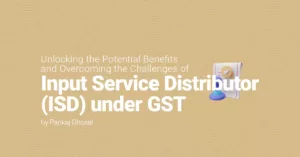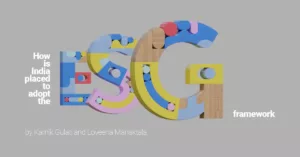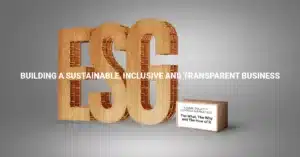“Once bitten, twice shy” is how the markets responded on the backdrop of IL&FS default. Sale of the DHFL papers by DSP in secondary markets, fearing liquidity issues at DHFL saw DHFL’s shares crashing over 50%, dragging down other NBFC stocks as well.
The NBFC space had created a lot of buzz ever since the banking system got itself tangled into the mess of ever-mounting NPAs. The inability of PSU banks to lend, created a huge opportunity for NBFCs to grab the market left open by PSU lenders. The share of credit grew rapidly amongst the NBFCs while bank credit, especially the PSU bank credit saw a steady decline over the last 2 years. According to a BCG report (November’17) between calendar years 2014 and 2017, the share of NBFCs in total loans is estimated to have increased from 21% to 44% whereas for public sector banks, it fell from 49% to 28%.
Spotting an opportunity, many entrepreneurs/business houses/ex bankers jumped on to starting new NBFCs, few very well-capitalized and few with marginal requirements or first round equity support of INR 50-100 crores, with the rest of the game being dependent on debt (either through banks or capital markets). The last 2-3 years witnessed the mushrooming of different types of NBFCs competing fiercely to garner market share and leveraging their balance sheets to fuel growth. Data from RBI on deployment of gross bank credit for August 2018 highlighted a positive variation of 43% (the highest) in deployment of bank credit to NBFCs on a YOY basis which indicates that banks were comfortable extending credit to NBFCs as they had limited options in other sectors and NBFCs appeared to be the most promising sector where good-rated borrower entities were available. Even the RBI felt that NBFCs could help in financial inclusion and recently in August 2018, it allowed banks to co-originate priority sector loans in collaboration with NBFCs.
The IL&FS default, knee-jerk reaction of the markets, and RBI’s move of scrutinizing financial health of NBFCs will now have a long-term impact over the sector. Capital market investors, majorly MFs, are likely to refrain from any further exposures in the short term on NBFCs and cautious view from banks is also likely to increase the cost of borrowings making it difficult for the NBFCs to operate. The obvious impact of this being on the Asset-Liability Mix (ALM) of the NBFCs. Similar to how the banking sector was reeling under several systemic issues, one can expect a similar situation with NBFCs now, where they will look to conserve capital to shy away from any immediate liquidity issues and avoid ALM mismatches. The story of deposit-taking NBFCs would be even more difficult with retail investors looking to liquidate their deposits and exit.
Every opportunity comes with inherent risks. The increasing number of NBFCs with nil to marginal differentiation in product lines, limited capital, average credit profile and riskier asset class managed to get credit from banks and FIs; and had levered themselves to the maximum extent in a bid to grow and achieve exorbitant valuations. Now, a sudden credit shortfall would break the chain and is likely to expose several NBFCs. MFIs at one point of time had seen the cycle of stress, when RBI had to strongly intervene and implement Usha Thorat’s recommendations which reformed the entire sector, then it was no different when every other entrepreneur wanted to set up an MFI as has been the case with NBFCs lately.
IL&FS, we all know, is not the first NBFC which got itself into a difficult spot. We had similar precedence with IDBI which was converted to a bank and lately IDFC which was also not in great health when it got a breather and converted into a bank. A debt of more than Rs. 91,000 crore on the books of IL&FS spells doom for the already under stress financial system.
Ultimately the investors in IL&FS are no different, and LIC seems to be having its hand everywhere. Recently, the government used LIC to bail out IDBI and it won’t be a surprise if something similar is done with IL&FS. No matter how it is approached, what is put to risk is the retail investors’ money and the need of the hour is to recapitalize IL&FS and prevent further defaults to keep the investors’ confidence in the sector alive.
Historically, herd mentality has ruled and we have always relied on one specific sector for credit growth. It creates ripple effects when the chain breaks. A decade ago, everyone wanted to finance a thermal power project, next came steel & roads, then renewable was a hot pick (wind, followed by solar) and now NBFCs. Each had its own share of problems and the result has been burgeoning NPAs and stress in these sectors; we can only hope that better-managed NBFCs break the sequence and come out clean without adding any further woes to the financial system. Although, it won’t be wrong to presume that many of the larger NBFCs into wholesale lending would have considerable stress in their balance sheets which could be window-dressed, given the relative independence they enjoy from RBI.
The eyes could roll next on thousands of flamboyant startups which have come up over the years, with very few being profitable and resilient enough to sustain the ups and downs of a growing economy like that of India’s and the risks will have to be identified early, before they get themselves into similar difficult situations, therefore jeopardizing the investors’ wealth.
It’s also about time when the regulators issue a word of caution to the rating agencies who are rigid and adamant to their procedures when it comes to rating SME/MME borrowers but fail to detect/highlight credit concerns of large borrowers. Before IL&FS, the precedence of Amtek Auto was already there and could be many more if a detailed analysis is done.
Probably, the tough competition and survival targets have started driving the decision-making with rating agencies, as well. We can hope that all these concerns coming to the fore in a distressed economic environment would allow us to fix them once and for all and arrive at long-term solutions rather than short fixes. For all we know, we probably have another disruption in the making somewhere which would change the way we think, that has been the hallmark of India; creating an opportunity in every crisis!
—
Written by Amit Pandey
Amit is the Director of the Transaction Advisory Services practice at Coinmen Capital Advisors.










